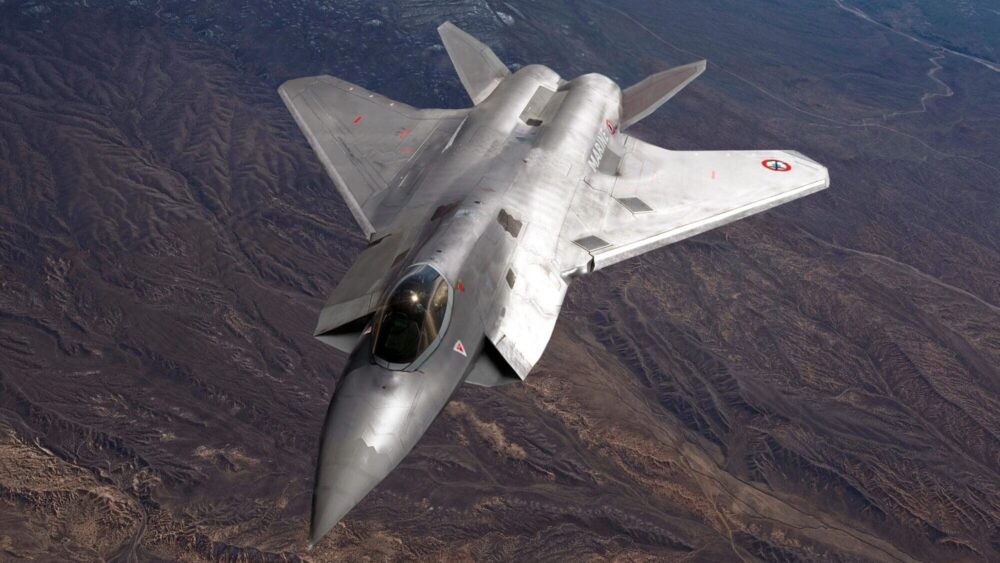No products in the cart.

A 2022 illustration of the Franco-German New Generation Fighter (NGF), the main component of the Future Combat Air System (FCAS) joint defense project.
By Rama, CC BY-SA 3.0 fr
Polish Defense Minister Władysław Kosiniak-Kamysz told a ministerial-level Weimar Triangle meeting in Paris on Monday, June 24th that Warsaw might be open to joining two key Franco-German defense projects. Both schemes aim to develop next-generation weaponry designed to arm Europe in future. The Weimar Triangle is the Franco-German-Polish cooperation format, revived since the Polish PM Donald Tusk took office.
The joint arms development projects—dubbed “Future Combat Air System” (FCAS) and “Main Ground Combat System” (MGCS)—are expected to result in an entirely European-made next-gen fighter aircraft and a core battle tank series, respectively.
Although still in its infancy, the joint venture is intended to replace the current flagship equipment of the French and German militaries—the Rafaele and Typhoon fighter jets as well as the Leclerc and Leopard battle tanks—by around 2045. The first working prototypes are expected to be unveiled by 2027.
The projects were also discussed at the Monday meeting of the defense ministers of the Weimar Triangle. Without making any definite commitments, the Polish minister said Warsaw was contemplating joining the project.
“We are interested to have closer ties also in terms of [the] defense industry,” Kosiniak-Kamysz said during the press conference. “When it comes to wide-reaching weapon systems, at the initiative of France and Germany, I expressed openness today. I am open for our allies in the Weimar triangle in all these areas to strengthen our ties.”
Back in April when Paris and Berlin signed their memorandum of understanding on the tank project, German Defense Minister Boris Pistorius already hinted at the possibility of Poland joining in the future, as well as other potential recruits.
“Once the contract is finalized, it will, of course, be a matter of getting other partners on board,” Pistorius said. “I see Italy there, but I also see other potential interested parties. … It is important that we include Poland with its new government.”
Apart from Poland and Italy, several other countries have signaled some interest in joining one or both projects before, including Spain, Sweden, Norway, and the UK. Spain is already an official partner in the fighter project (FCAS), which is years ahead of the MGCS. The first mock-up models were already showcased at the 2019 Paris Air Show.
During the same meeting, the ministers also discussed the future of European military support of Ukraine, stressing that Europe cannot allow its efforts to be hindered by a national conservative government being elected in France in the next two weeks.
According to Kosiniak-Kamysz, the choice of French voters is critical to “ensure EU security,” because “support to the [EU’s] Eastern front is necessary, it’s not open for debate.”
His German counterpart, Pistorius even added that “nationalism has never been a solution to problems, but rather one of the problems.”
Marine Le Pen’s National Rally (RN) has long advocated scaling back military support for Ukraine in order to avoid escalation—although the conservatives did not say they would withdraw all French aid entirely.
During the election campaign, RN’s candidate for prime minister, Jordan Bardella, confirmed that France would remain a NATO member under his leadership and would continue sending military equipment to Ukraine—provided it was for defensive purposes only.
This would rule out sending long-range cruise missiles and military instructors or other support troops, in contrast to what President Emmanuel Macron’s current center-left government intends to do.
After the meeting, French Defense Minister Sébastian Lecornu promised not only to continue supplying Kyiv with long-range weapons after the Ukrainian attack on Crimea–which led Moscow to blame the West and threaten with escalation–but to also start donating several of its Mirage 2000-5 fighter jets.
The supply of French fighters was first announced by President Macron last Thursday when he also said Paris is preparing to train and equip a military brigade of 4,500 Ukrainian soldiers on Ukrainian soil. “We’ve done a lot with other European partners on training. We’re now entering a new phase.”